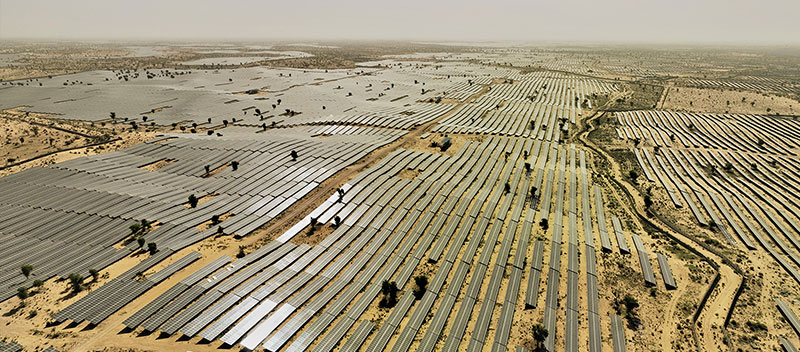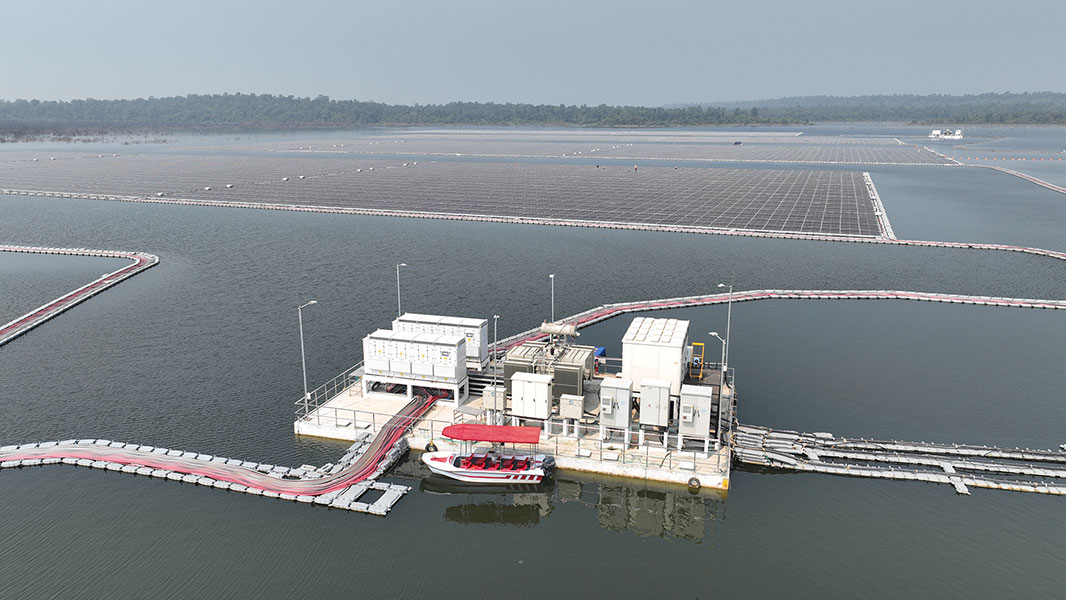Project Overview:
The 125.84 MWp DC Omkareshwar Floating Solar Project demonstrates the successful integration of advanced floating solar technology at Madhya Pradesh's Khandwa district. The project showcases advanced floating technology by utilizing flexible mooring with dead weight anchoring and IFP barges. The installation of Ferro cement Inverter floating platforms, covering 258 square meters, is the largest of its kind, marking a significant milestone in floating solar technology.
Objectives:
The key objectives behind implementing this project include:
- Successfully implementing large-scale floating solar technology with innovative anchoring solutions in challenging reservoir conditions, and world's largest Inverter floating platform.
- Providing sustainable power supply to MPPTCL (Madhya Pradesh Power Transmission Company Limited) and minimizing land use
Key Project Features:
- Industry-leading Inverter floating platforms(IFP)
- Robust anchoring and mooring system ensuring platform stability in variable conditions
- State-of-the-art monitoring and control systems for operational efficiency
- Six Sigma quality control implementation for floater manufacturing standards
- Integrated wave management system for equipment protection
- Advanced weather monitoring and response protocols
Critical Challenge Analysis:
- Hydrological Complexity: The project faced unprecedented challenges due to reservoir water level fluctuations. Our technical team developed custom wave breaker systems capable of withstanding these extreme conditions.
- Logistical Orchestration: In a remarkable demonstration of project management, the team navigated the complexities of transporting 213,460 bifacial modules and 258 square metre IFP to a remote location.
- Technical Integration Paradigm: The team pioneered the deployment of ballastive IFP barges - the largest of their kind - housing critical AC equipment. This engineering feat required meticulous calculations to ensure perfect buoyancy while maintaining structural integrity under varying load conditions.
- Environmental Adaptation Strategy: Water-based operations presented unique challenges for the bifacial glass-to-glass modules. The team developed innovative cleaning protocols and anti-algae treatments, ensuring the projected annual generation remained achievable.
- Safety and Maintenance Protocol: Working over water bodies necessitated the development of specialized safety protocols. The installation of floating security cabins created safe zones for maintenance crews, while advanced monitoring systems were implemented to track structural integrity and performance metrics in real-time, ensuring optimal operation throughout the 12-month installation period.
Innovation Highlights and Impact:
The project showcases ground-breaking solutions in floating solar technology, particularly the implementation of wave breaker systems and ballastive IFP barges through the application of six-sigma technique for floater quality. The key highlights of this project include:
- Generation of 204580 MWh electricity annually
- Achieving CO2 reduction of 173,893 tons per year
- Controlling water evaporation of 32.5 lakhs metre cube annually
Conclusion:
The 125.84 MWp DC Omkareshwar Floating Solar Project project stands as a testament to engineering excellence, demonstrating how innovative solutions can transform environmental challenges into opportunities for sustainable energy generation. The successful implementation has created a blueprint for future floating solar installations globally.


